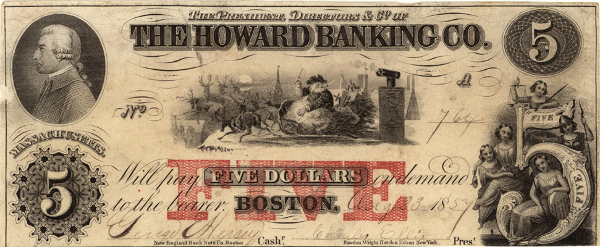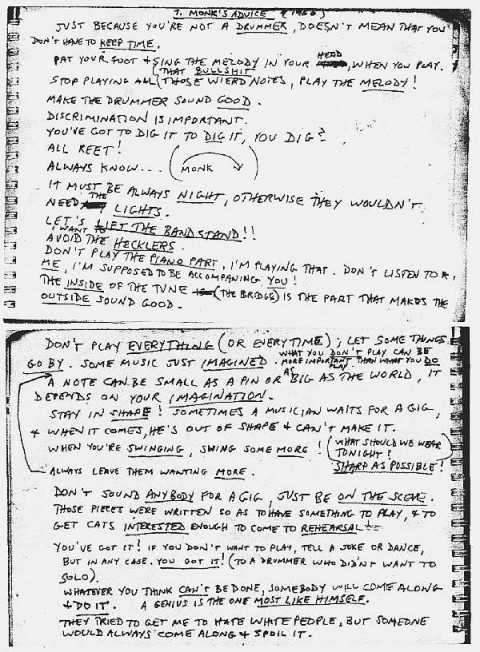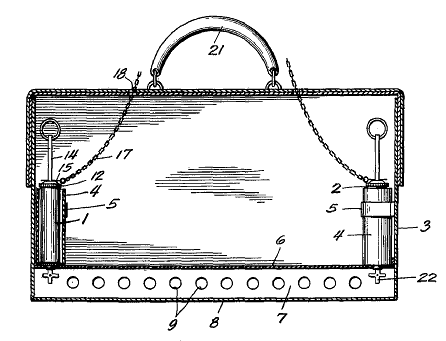- A TOYOTA’S A TOYOTA is a palindrome.
- Lee Trevino was struck by lightning in 1975.
- KILIMANJARO contains IJKLMNO.
- 39343 = 39 + 343
- “Money often costs too much.” — Emerson
Black and White
Okay, Cupid
Here’s a familiar idea — in 1820 an enterprising Englishman advertised “an establishment where persons of all classes who are anxious to sweeten life by repairing to the altar of Hymen, have an opportunity of meeting with proper partners.” If you were seeking a mate you’d sign up by a paying a fee according to your desirability; the handbill gives these rather blunt examples:
Ladies.
1st Class. I am twenty years of age, heiress to an estate in the county of Essex of the value of 30,000l., well educated, and of domestic habits; of an agreeable, lively disposition, and genteel figure. Religion that of my future husband.
2nd Class. I am thirty years of age, a widow, in the grocery line in London — have children; of middle stature, full made, fair complexion and hair, temper agreeable, worth 3,000l.
3rd Class. I am tall and thin, a little lame in the hip, of a lively disposition, conversible, twenty years of age, live with my father, who, if I marry with his consent, will give me 1,000l.
4th Class. I am twenty years of age; mild disposition and manners; allowed to be personable.
5th Class. I am sixty years of age; income limited; active, and rather agreeable.Gentlemen.
1st Class. A young gentleman with dark eyes and hair; stout made; well educated; have an estate of 500l. per annum in the county of Kent; besides 10,000l. in three per cent. consolidated annuities; am of an affable disposition, and very affectionate.
2nd Class. I am forty years of age, tall and slender, fair complexion and hair, well tempered and of sober habits, have a situation in the Excise, of 300l. per annum, and a small estate in Wales of the annual value of 150l.
3rd Class. A tradesman in the city of Bristol, in a ready-money business, turning 150l. per week at a profit of 10 per cent., pretty well tempered, lively, and fond of home.
4th Class. I am fifty-eight years of age; a widower, without encumbrance; retired from business upon a small income ; healthy constitution; and of domestic habits.
5th Class. I am twenty-five years of age; a mechanic of sober habits; industrious, and of respectable connections.
“The subscribers are to be furnished with a list of descriptions, and when one occurs likely to suit, the parties may correspond; and if mutually approved, the interview may be afterwards arranged.”
I can’t tell how well it succeeded. “It is presumed that the public will not find any difficulty in describing themselves; if they should, they will have the assistance of the managers, who will be in attendance at the office, No. 5, Great St. Helens, Bishopsgate Street, on Mondays, Wednesdays, and Fridays, between the hours of eleven and three o’clock. — Please to inquire for Mr. Jameson, up one pair of stairs. All letters to be post paid.”
(From Henry Sampson, A History of Advertising from the Earliest Times, 1875.)
Waypoints

In 1927, before the advent of long-range aircraft, engineer Edward R. Armstrong proposed a unique way to get across the ocean: floating airports. Armstrong’s “seadromes” would stand above the waves on columns of steel, tethered to the ocean floor and stabilized with ballast tanks. Atop each would be a 1200-foot runway, a hotel, a restaurant, a hangar, and a fuel depot, effectively turning it into a stationary aircraft carrier. Armstrong hoped to string eight of these across the Atlantic so that short-range planes could hop between America and Europe.
He managed to interest the U.S. government in the scheme, and in 1934 Popular Science reported that lawyers had built a case for anchoring the stations on the high seas. But the Depression and the appearance of transatlantic aircraft finally crippled the plan, and Armstrong’s dream was never realized. The principle he proposed survives in floating oil rigs.
Stocking Money

The U.S. government did not issue paper money until 1861. Until then, private banks printed their own currency under charters to the states.
As a result, this $5 bill featuring Santa Claus was legal tender in the 1850s. It was issued by the Howard Banking Company of Boston.
A number of banks issued Santa-themed money in the same period — the most natural being the St. Nicholas Bank of New York City.
In a Word
peccable
adj. liable to sin
Close Quarters
Let’s hope this isn’t true — Francis Joseph Baigent’s History of the Ancient Town and Manor of Basingstoke (1889) records the story of a woman who was buried alive twice. Baigent cites two sources, an undated tract from around 1675 and a book published in 1786, The Uncertainty of the Signs of Death. Mrs. Blunden, the wife of a local malt trader, was “a fat gross woman” who in July 1674 drank so much poppy-water (opium) that she fell into a deep sleep that arrested any apparent breath or pulse. The apothecary declared that he supposed she would never wake, and her husband left for London on business, directing that she be buried on his return. But the woman’s relatives noted that the weather was warm and that the body would not last four days, so they buried her on the following day, a Wednesday. Now the tract reads:
The Friday following toward the evening some of the Scholars of the Town being at play in the Churchyard near her grave, they fancied they heard a kind of hollow voice, as it were under ground, to which laying their ears and listening more attentively they plainly heard somebody say:
Take me out of my Grave,
which words the complaining voice repeated several times, intermixing them with fearful groans and dismal shriekings.
The boys reported this to several people but were dismissed. They returned to the chuchyard on Saturday and heard the voice again, “if not with so distinct yet with a louder accent,” and that afternoon the clerk finally exhumed Mrs. Blunden. “And now surveying her body, they found it most lamentably beaten, which they concluded to proceed from the violence she did herself in that deplorable an astonishment, but upon the most diligent scrutiny they could not apprehend that she had the least breath of life remaining, and therefore they again let her down into the grave, intending on the morrow to send to the Coroner.”
Guards were set to watch the resealed grave, but as the night was wet they abandoned their post, and “on the morrow morning at their return to the grave, they found she had torn off great part of her winding sheet, scratched herself first in several places, and beaten her mouth so long till it was all in gore blood.”
A number of citizens were indicted for their negligence, but a town doctor testified that he had held a mirror to Blunden’s mouth before her burial and could see no sign of breath, so “only the Town had a considerable fine set upon them for their neglect.”
Monk’s Notes
Steve Lacy played soprano saxophone in Thelonious Monk’s quintet for 16 weeks in 1960. He took down the pianist’s advice in a spiral notebook:

“Monk’s tunes were ideal and difficult, and interesting, intriguing, and satisfying,” Lacy remembered later. “I started and I’ve never stopped looking into his music.”
Valise Police

Briefcase security, then and now:
In 1925, August Eimer invented the case above, which emits smoke when torn from its owner’s hand “in the form of a continually issuing cloud that will envelop the container and serve to unmistakably identify its purloiner, necessitating discard of the container by the thief if he would make his escape.”
In 1989, Isaac Soleimani offered the model below: As the thief is running off, you activate a radio signal that releases a latch, “with the result that the briefcase falls on the ground, leaving the thief only with the handle.”
It seems there’s always an element of slapstick. “The handle could also be spring-loaded so that upon remote triggering it could clamp down hard onto the thief’s hand, clamping the fingers between the handle and the top of the briefcase, thereby inflicting pain to the thief, causing him to drop the briefcase.”

The End of Me
How very intimate the bodily sense is can be seen by performing a little experiment in your imagination. Think first of swallowing the saliva in your mouth, or do so. Then imagine expectorating it into a tumbler and drinking it! What seemed natural and ‘mine’ suddenly becomes disgusting and alien. Or picture yourself sucking blood from a prick in your finger; then imagine sucking blood from a bandage around your finger! What I perceive as belonging intimately to my body is warm and welcome; what I perceive as separate from my body becomes, in the twinkling of an eye, cold and foreign.
— Gordon W. Allport, Becoming: Basic Considerations for a Psychology of Personality, 1960

